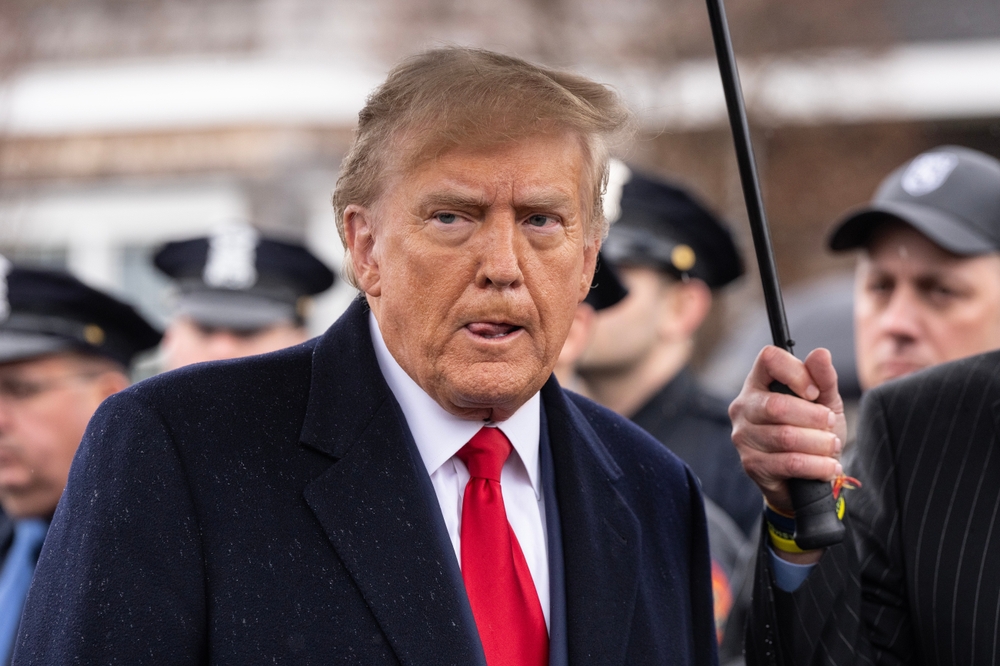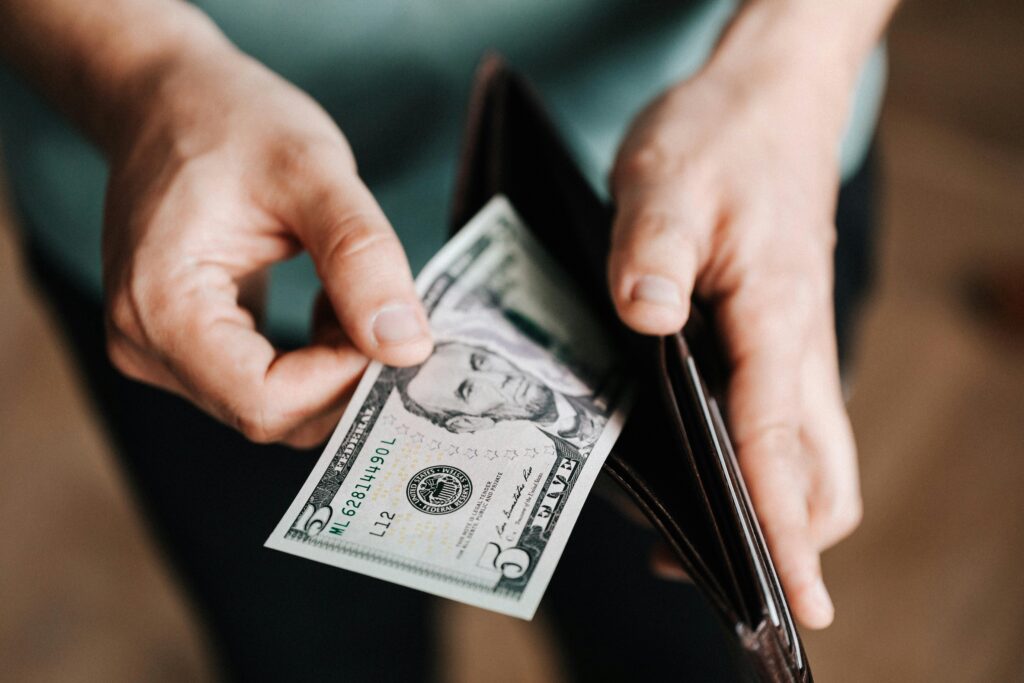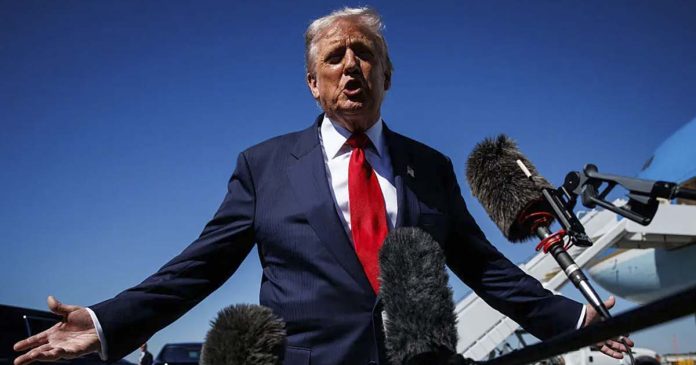Over the weekend, President Donald Trump suggested via his Truth Social platform that most Americans are to receive dividends of “at least” $2,000 per citizen. According to Trump, the rebate would be funded by the tariff revenue collected in this year. He promises to distribute stimulus checks worth $2,000 to most American citizens, but it is unclear who “most” Americans encompass. The announcement was met with mixed reviews with some experts concerned about the initiative’s feasibility and implementation.
Trump tied this initiative’s possibility directly to tariff revenue generated by his administration’s trade policies. “People that are against Tariffs are FOOLS!,” Trump said in his post on Truth Social. “We are taking in Trillions of Dollars and will soon begin paying down our ENORMOUS DEBT, $37 Trillion. Record Investment in the USA, plants and factories going up all over the place. A dividend of at least $2000 a person (not including high income people!) will be paid to everyone.”
Trump and his administration have not laid out any firm plan on exactly what dividends could look like. No set clarification has been given on income thresholds, a timeline on when it will be implemented or other qualifying criteria as of yet. This initiative would also require action from Congress and may encounter challenges. Trump’s post came days after the legality of his tariff policy came under debate in the U.S. Supreme Court.
Despite these concerns, the White House announced that Trump remains “committed” to the $2,000 stimulus check proposal, according to Press Secretary Karoline Leavitt. The administration stated it would explore all legal options to make this happen. However, Leavitt provided no concrete timeline for implementation. She also declined to share additional details about eligibility requirements. The announcement left many questions unanswered about how Americans would qualify for these stimulus checks.
Who Qualifies for These Stimulus Checks

Trump indicated in his Truth Social post that “A dividend of at least $2,000 a person (not including high income people!) will be paid to everyone,” not really defining who fits into the “high income” bracket. However, Treasury Secretary Scott Bessent provided some clarification on what “high income” might look like during an appearance on “Fox & Friends”. He suggested that families earning less than $100,000 a year would qualify for the payments although he stated this figure remains under discussion and not finalized. There has also been no clarification on whether or not children would receive separate payments.
How the payout will work or who qualifies is still uncertain, however, previous stimulus programs could offer some guidance on potential eligibility criteria. During the pandemic, stimulus checks went to individuals earning under $75,000 and couples earning under $150,000. Higher earners received reduced payment amounts. The current proposal mentions no such tiered approach. It simply excludes undefined “high-income” households.
Treasury Secretary Bessent also suggested stimulus benefits may come “in lots of forms”. In an interview with ABC News, he mentioned potential tax reductions as part of the stimulus. These could include eliminating taxes on tips, overtime pay, and Social Security benefits. The proposal could also include deductibility of auto loans. However these tax reductions were already meant to be implemented by Trump’s One Big Beautiful Bill legislation. Analysts are critical as to whether this is rebranding pre-existing legislation on tax cuts as a new stimulus program or something that will provide genuine economic relief.

Trump already toyed with the idea of rebate checks tied to tariff revenue back in July and October of this year. Back in July, Missouri Republican Senator Josh Hawley proposed the American Worker Rebate Act of 2025. This act would provide $600 tariff rebates to most Americans, and their child or a family of 4 would receive an estimated $2,400. However, after the bill had been referred to the Senate committee, there have been no updates since September.
Trump’s pledge relies heavily on tariff revenue to fund the proposed stimulus checks. Tariffs function as taxes on imported goods entering American markets. When foreign companies sell products in the United States, tariff duties increase their costs. Businesses typically pass these costs to American consumers through higher prices. Trump argues that tariffs generate enormous government revenue. He claims this revenue can fund numerous programs including stimulus payments. The administration asserts that increased domestic manufacturing also strengthens the economy through tariffs.
The federal administration collected roughly $195 billion in tariff-related custom duties by September of this year, according to the Treasury Department. This amount of revenue falls significantly short of the payout estimates. Trump also stated in a post that the tariff revenue will also be used to offset federal debt and offset costs of the recent tax legislation. He said the remainder of the revenue after the stimulus program has been implemented would go towards the national debt.
Can Tariffs Generate Enough Revenue?
Economists question whether collected tariff revenue sufficiently funds the proposed stimulus checks. According to a post made on X by Tax Foundation economist Erica York: “If the cutoff is $100,000, 150M adults would qualify, for a cost near $300 billion. … Adjusting for that, tariffs have raised $90 billion of net revenues compared to Trump’s proposed $300 billion rebate.”
This estimate excludes any payments to dependent children. If children were to receive payments, costs could exceed $500 billion according to some estimates. The Committee for a Responsible Federal Budget projected costs as high as $600 billion depending on program structure. Philanthropic American company Arnold Ventures’ co-chair estimates costs could reach up to $513 billion. The $195 billion collected in tariff-related customs duties by the administration is a far cry from the necessary $300 billion required for adult stimulus alone.
Trump’s tariff policy is currently also under legal scrutiny, leaving the future of tariff revenue uncertain. Recently, the Supreme Court held a hearing for arguments in cases challenging Trump’s use of the International Emergency Economic Powers Act (IEEPA) to validate his implementation of sweeping tariffs. If the Supreme Court restricts tariff authority, future revenue could decline substantially. Trump’s use of the IEEPA has already been ruled illegal in 3 lower courts. Trump suggests that tariff revenue will reach “trillions of dollars.” However, independent economic analysis contradicts this claim. Most economists estimate annual tariff revenue between $200 billion and $300 billion realistically.
Legal Obstacles and Court Challenges
The administration justified broad tariffs using the International Emergency Economic Powers Act (IEEPA) which allowed Trump to impose trade restrictions. The law is imposed when a national emergency is declared. Three lower federal courts already ruled this approach illegal. At the Supreme Court hearing, several justices appeared skeptical of the administration’s legal reasoning.
If courts strike down IEEPA tariffs, government revenue from these duties would diminish significantly. The Trump administration could pursue alternative tariff authority under different laws. Section 232 of the Trade Expansion Act allows tariffs for national security purposes. Section 301 of the Trade Act permits tariffs addressing unfair trade practices. However, these approaches require investigative processes taking months rather than weeks. Trade experts suggest that even if the Supreme Court restricts IEEPA tariffs, the administration would maintain higher overall tariff rates.
Timeline and Implementation Uncertainty
The Trump administration has kept hush about the timeline of the implementation of the stimulus check. White House Press Secretary Karoline Leavitt stated the administration would provide updates when available. Trump has not specified whether Americans would receive direct checks, electronic transfers, or alternative methods. Legal hurdles and cost of the initiative are 2 significant challenges analysts point out make the program untenable.
The stimulus initiative would also require review and approval from Congress to begin its implementation. The Committee for a Responsible Federal Budget notes that Congress explicitly declined to include tariff dividend provisions in recent legislation. When lawmakers approved the One Big Beautiful Bill Act in July 2025, they had the opportunity to include tariff dividends. Congress rejected this approach. Without congressional action, the Trump administration faces significant obstacles to distributing these stimulus checks through executive action alone.
Comparing This Proposal to Previous Stimulus Programs
Americans received stimulus payments during the COVID-19 pandemic and Trump’s first term. The first pandemic stimulus provided $1,200 per adult. Subsequent payments increased to $1,400 per adult. These programs included dependent children receiving identical payments. The payments occurred relatively quickly after legislative approval during the pandemic. Most payments reached eligible Americans within weeks rather than months, as seen with some other programs. With Trump’s proposed stimulus payout, no detailed eligibility rules exist beyond vague income thresholds. It relies on tariff revenue, which tariff policy is now under legal scrutiny, and does not have an alternative funding mechanism should tariffs be deemed illegal.
Economic Impact on American Consumers
Tariffs directly impact consumer prices for everyday products which the consumer fits bill for the tariffs imposed by companies. Independent analyses estimate that current tariffs cost American households between $1,600 and $2,600 annually. These increased costs affect groceries, clothing, vehicles, electronics, and numerous other products. Higher prices persist as long as tariffs remain in effect. A $2,000 stimulus payment would partially offset these increased costs. However, tax experts question whether one-time payments adequately compensate for ongoing price increases. Removing tariffs would provide permanent relief rather than temporary stimulus payments.
The timing of stimulus payments relative to tariff impacts matters significantly. If tariffs cause increased prices immediately but stimulus checks arrive months or years later, Americans bear financial hardship in the interim. Families struggle with higher costs before receiving compensation. Economists debate which approach better serves American interests. Some argue that removing tariffs benefits consumers more directly as they no longer fit the bill for tariff increases. Others suggest stimulus payments provide legitimate relief. The relative merits depend on specific economic conditions and payment timing.
What Americans Should Know Right Now
The $2,000 stimulus check proposal remains uncertain and lacks implementation details. No payments have been authorized officially through legislation. The Trump administration has not provided specific eligibility criteria. No timeline exists for potential payment distribution. Court decisions about tariff legality could eliminate the proposed funding source. Congress has previously declined to include tariff dividends in legislation. Americans should avoid assuming they will receive these stimulus checks.
Households should plan financial decisions based on confirmed income sources rather than hypothetical stimulus payments. Tariffs continue to increase consumer prices throughout 2025 and potentially beyond. These price increases represent concrete financial impacts affecting household budgets now. Stimulus payments remain speculative. Families should monitor official announcements from the Treasury Department and White House. Credible news sources will provide updates when substantive developments occur. Americans should approach claims about guaranteed stimulus payments with appropriate skepticism.
What Needs to Happen
For stimulus checks to become a reality, multiple obstacles require resolution. The Trump administration must secure congressional approval for payments. Congress must pass legislation authorizing and appropriating funds for stimulus checks. The Supreme Court must resolve legal questions about tariff authority. If courts restrict tariff revenue, alternative funding sources would need identification. The administration must define specific eligibility criteria. Clear rules would ensure fair distribution and prevent confusion. The government must establish payment delivery mechanisms.
Treasury Department officials must develop systems for processing and distributing payments. These systems must verify eligibility and prevent fraud. Implementation would require substantial administrative resources. All these elements require time, effort, and coordination between multiple agencies. The complexity of implementation explains why no timeline currently exists. Realistically, substantial obstacles must be overcome before any stimulus checks reach American households. The uncertainty surrounding these elements should inform how Americans view this proposal.
Economic conditions and political factors will influence the proposal’s future. If tariff revenue falls short of projections or if the Supreme Court restricts tariff authority, the entire proposal becomes infeasible. If political priorities change, Congress might decline to approve stimulus payments. Multiple scenarios could prevent this proposal from becoming reality. Americans should remain informed about developments but avoid making financial decisions based on speculative stimulus payments. Official announcements will confirm whether this proposal progresses toward actual implementation or remains an unfulfilled proposal.

